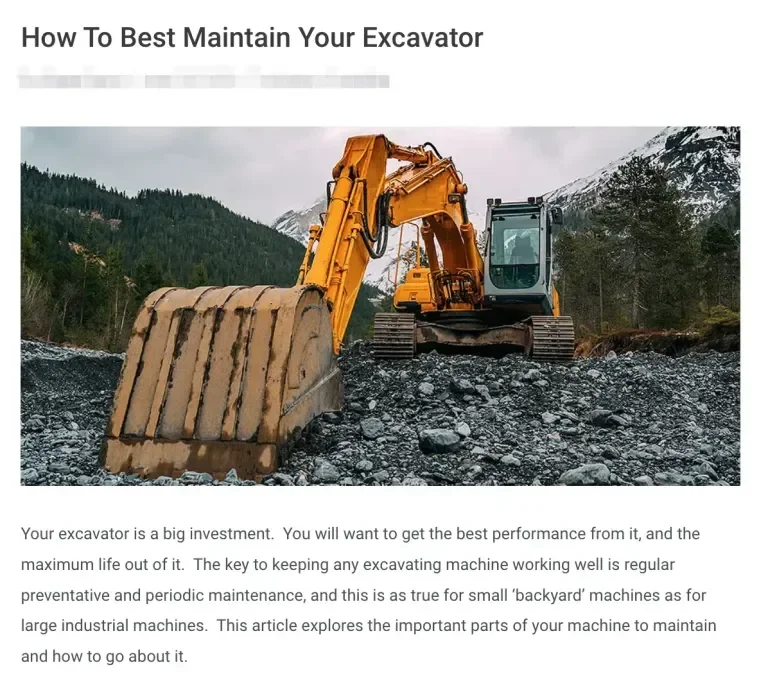Brilliant advertising copy can help make your product detail page more appealing to buyers and stimulate the search engine’s attention for broader advertising coverage. So, how to improve your advertising copy? Check out the following advice!
1. Insert keywords properly
When you’re writing a copy, make sure it contains enough advantages of the product, which should also be described specifically but never generally. Proper usage of keywords is recommendable while abusing is forbidden. The key is to insert highly relative keywords of the product, like feature-related keywords and long-tail keywords, into the copy appropriately and, meanwhile, not damage the copy’s readability.
- Example: The keyword “UPF Clothing” is a big attention attracter with a monthly search volume of 8,100(Image 1). The figure means both great opportunities and intense competition. Entering the product detail page on alibaba.com through the search engine result page of “UPF Clothing,” you’ll see a long advertising copy (Image 2). Tightly related to the product, the copy is all about its features and advantages. The keywords are also inserted properly for the convenience of search engine crawling.

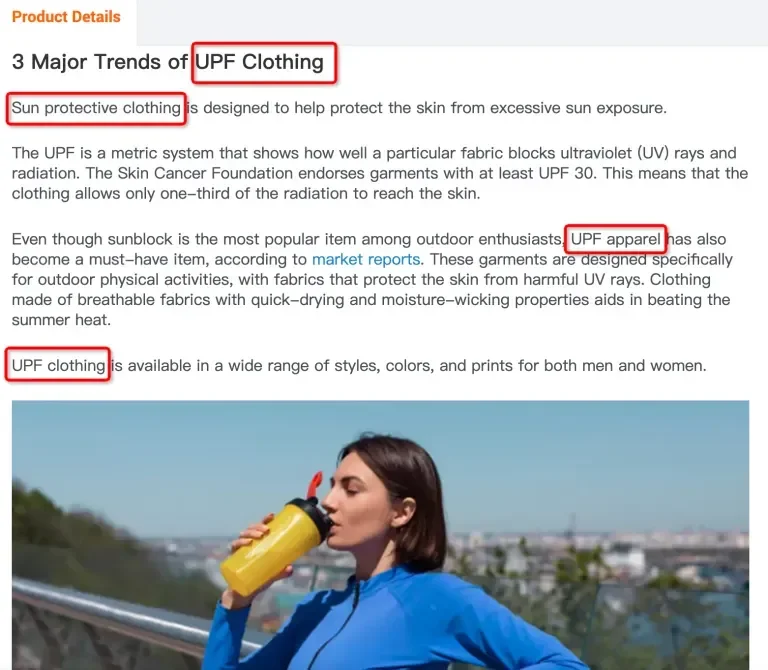
2. Organize the copy with subtitles
The search engine prefers a reasonably organized copy for its clear structure over a copy specializing in text length. It is better to add a subtitle ahead of every point to highlight the minor topics discussed in the copy, and the subtitles are also a perfect place to insert keywords. Different fonts and font sizes can be used in product descriptions on alibaba.com to differentiate subtitles and content text.
- Example: In the copy shown in Image 3, the writer uses subtitles to demonstrate factors to consider when choosing an excavator, which allows the reader to have a clear view of the structure and key points of the copy. Copywriters can insert the keywords in the subtitles for the convenience of search engine crawling and indexing.
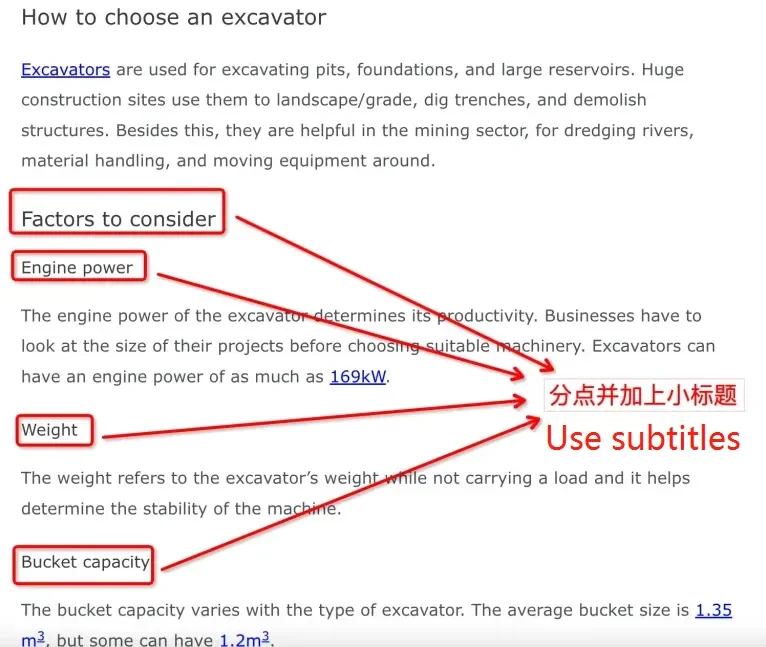
3. Be original
Originality in copywriting means novel ideas and individual content. Neither of them is easy to reach. Many businesses choose to cut corners by using others’ copies to introduce their product, which may save their efforts but fails to save them from the punishments of the search engine. For example, the search engine doesn’t index duplicate copies, which means the engine does not recognize them and won’t put them at the top of the page. As time passes, the engine will tag the pages as low-quality information. To be original in copywriting, you can start by collecting materials and topics from buyers’ questions, social media, and forums, in which you can learn the latest hot topics and take the ones you need to be the topics of your copies.
- Example: Duplication rate check.
- Put a text in the search box like in following image.
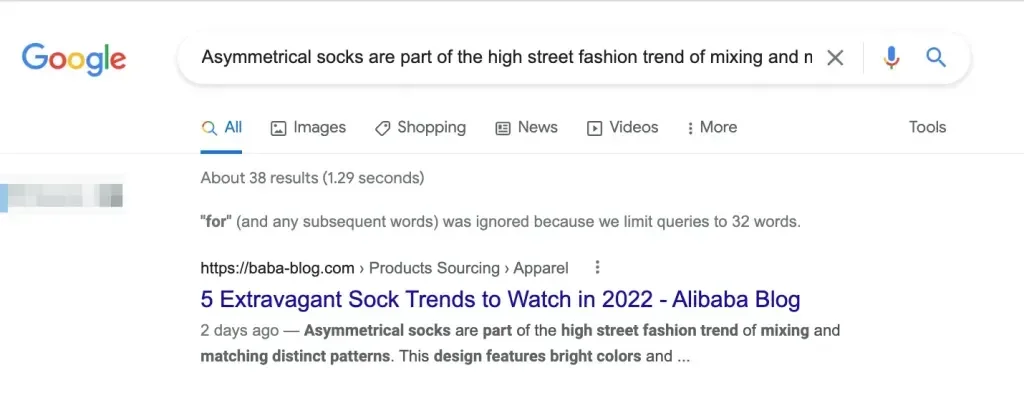
- Press “Enter” to get the result.
- If there’s no or only a little content in bold or red, this copy has a low duplicate rate, which will be higher if there’s much content in bold and red. (Image 5)
- Specific and unmodifiable technical terms, place names, country names, and people’s names are exceptional. For example, it’s acceptable if the content in bold and red is the United Kingdom of Great Britain and Northern Ireland.
- The duplication rate cannot be over 30%.
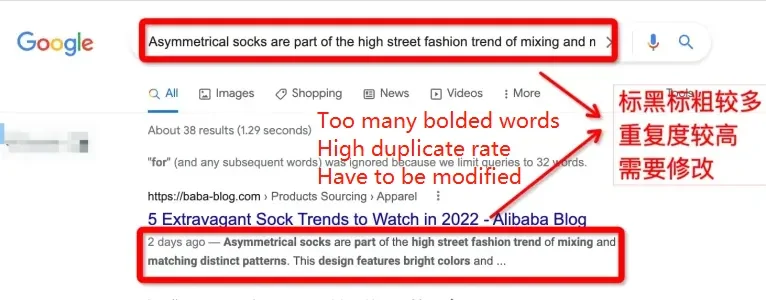
- Reduce the duplication rate
- Method 1: Modify the repeated contents.
- Method 2: Delete the repeated contents and describe the product from a new perspective.
4. Meet buyers’ needs
Determining buyers’ search intent of keywords and their needs for the product is essential when copywriting, for it makes the process easier. But how to determine them before writing a copy? Here’re three answers:
4.1 Use PAA card
PAA card is the People Also Ask section on the search result page that appears every time you search product keywords (Image 6). It shows relative questions that concern most customers. Sometimes these questions are already frequently searched and inserted with keywords. You can create topics from these questions, but the copy content must be original.
- Example: Search “Alibaba” on Google, and you’ll see the PAA card (People Also Ask) at the head of the page, which shows Q&A about the keyword. Google recognizes these, and usually, they have a certain amount of search volume, meaning many buyers want to know these answers.
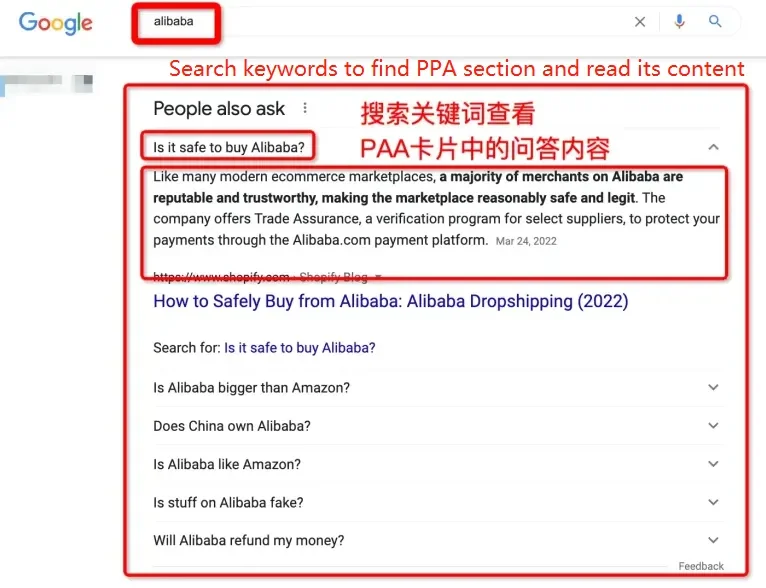

4.2 Learn from highly-ranked content on the page
Generally, highly-ranked links’ content caters to people’s search intent the most. They can help you write your copies. For example, if the search results are mainly about the price range of the product, maybe you should follow the topic and write an introduction about that product’s prices. And as emphasized before, the content must be original.
- Example: Search FRID, and you’ll see that highly-ranked websites are dictionary websites that present articles and are mainly about the definition of FRID (Image 8). If you are a merchant selling FRID-related products, you can write a copy with a topic about the interpretation of FRID and use your products in the article as examples to promote.
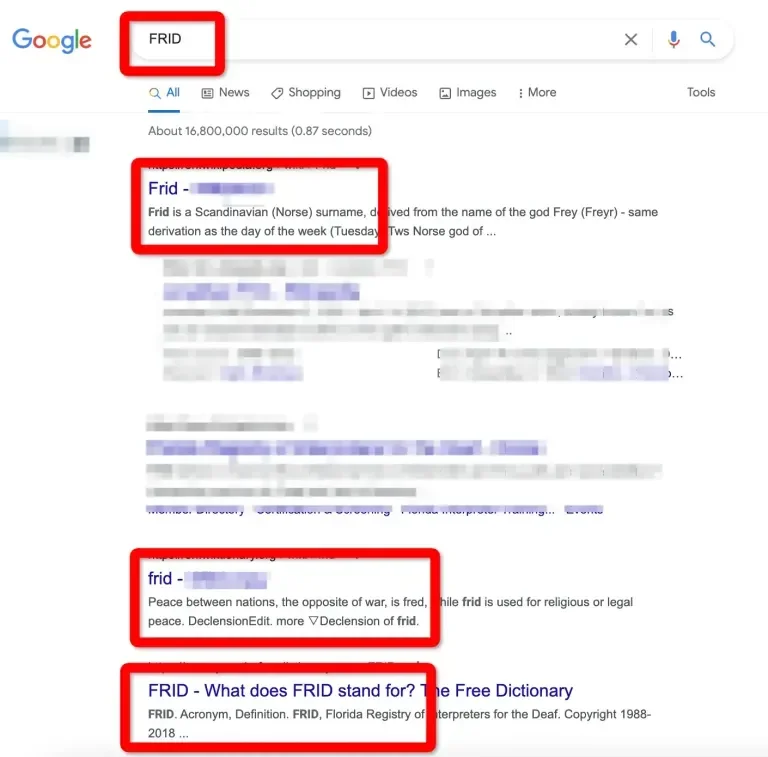
4.3 Collect buyers’ questions
As sellers, who have the most contact with buyers, you can extract questions frequently asked by the customers from the records, which can be copy topics for your product pages. If you choose to go further and search these questions using the official engine tool, you may find some with a certain amount of search volume. Then you can start the copywriting with these questions as topics.

